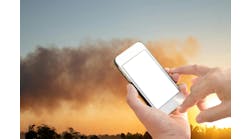Latest from Home
Recent updates include notices from Highland, Enea, Eyelinez, and reports on Zoom Fatigue and connection deprivation. Visit here to find these and more COVID-19 Impact Updates.
35% of parents say they could not mentally cope with another year of virtual learning.
By Highland
In order to get a better understanding of how children have adapted and coped with these changes, Highland surveyed nearly 1,000 parents across the country with children in grades K-8 on topics related to virtual learning.
Highlights:
- 72% of parents believe virtual learning is putting their child behind academically.
- 57% of parents say their child’s grades have fallen behind during the pandemic.
- 79% of parents have experienced tech-related issues during virtual learning. Parents spend 2.7 hours per day on average assisting their children with tech-related issues.
- Biggest challenges with virtual learning:
1. Child not paying attention
2. Limited contact with classmates
3. Communicating questions to teacher
4. Child not sitting still
5. Tech issues. - 35% of parents say they could not mentally cope with another year of virtual learning.
For more information, see the complete Report by Highland at https://highlandsolutions.com/blog/how-covid-19-affected-childrens-mental-health
It’s Not Zoom Fatigue, It’s Connection Deprivation
By Mark Quinn
Most of us had never heard of the term Zoom fatigue prior to the pandemic, but in the past year it’s become a reality for many of us living in a virtual world.
Maintaining proper eye contact with a camera is not a new challenge. In fact, the challenge has existed ever since anyone had to stare into a cold dark camera as if they were engaging with a smiling human.
According to a Stanford University study, 1 in 7 women and 1 in 20 men face Zoom fatigue after video calls, and there have been many suggestions as to how to combat those dreaded afternoons of marathon virtual meetings.
For example:
- Take breaks.
- Turn off self-view.
- Turn off the video altogether.
- Take a walk.
You should do all of those things; however, what most of these suggestions miss is that it’s not just that we’re exhausted from staring at the screen, we miss staring at each other!
Eye gaze and our interpretation of it is one of the earliest and most important elements of social development in humans. As early as four months of age infants begin interpreting the visual gaze of adults, and as adults, eye contact is understood to convey honesty, confidence, and attraction. In fact, sustained gaze has been proven to release oxytocin, energizing and connecting you each time you make eye contact with another person. As you (used to anyway) walk the halls of the office, school, or store, you make eye contact, receiving in exchange micro-doses of interconnectivity.
When the pandemic hit, many of us lost our regular stream of interpersonal connection to power us and keep us going throughout the day. Instead, we now spend all day staring at a bank of faces (sort of) staring back at us. We’ve been deprived of the many subtle and essential social signals that inform our conversations and connections. We’re left with a flat, surreal, virtual world, devoid of the interpersonal connection we crave.
Remarkably, further research has shown that we can reproduce the same neurological stimulation we get from eye contact in person, virtually.
The catch is that you have to look at the camera to create the perception of direct eye contact. When you do, you can create the same connection as in person, and even become significantly more memorable (handy for virtual interviews, sales, or even dates).
It’s admittedly not easy remembering to look at the camera — and even if you do, it’s perhaps even more challenging to naturally engage with the small, dark hole that is your camera.
The world and the way we communicate has changed, and we need to re-learn how to optimize our communication for our new virtual norm — because the pandemic will pass, but virtual communication is here to stay. To thrive, we need to adapt.
If you spent all day with every person you met not making eye contact, you’d be drained regardless of the medium. And that’s exactly what is happening now. On camera, our natural inclination is to look at the screen, but you wouldn’t stare at your audience’s feet (or seemingly out the window) in person, and you shouldn’t do it virtually.
Useing Eyelinez may help. You engage with the vinyl repositionable stickers the same as you would another person in your conversation, with the general rule of thumb being to primarily look at your sticker (and your camera) while you’re speaking, then looking at the screen while others are speaking. Position your camera at or slightly above eye level (never below eye level unless you want to provide a virtual tour of your nose), place your favorite sticker around the camera, smile, and connect!
By making direct eye contact (and smiling!), you draw in and engage your audience, making your presentations and meetings more enjoyable (for all involved), and leaving you and your audience energized.
Looking at the camera won’t magically remedy our fatigue, but it will give you back an important ingredient for our recovery: each other. We are all feeling connection deprivation as we are in each other’s spaces and faces more now than ever, yet we are also oddly more apart than ever before too.
Look at the camera to see each other, and connect, enabling us all to thrive virtually the same way we always have — together.
About the Author: Mark Quinn’s varied career spans a range of functions across technology and engineering. From contracting and acquisitions in the US Air Force, to managing Retail Service Operations at Apple, to Global Service operations at Amazon, and Product Operations at LinkedIn, Mark has sought out tough operational challenges where he can help evolve and transform himself and the work. Now as the creator of Eyelinez, Mark is passionate about people connecting through technology. For more information, please visit https://www.eyelinez.com/.
Children Unsupervised Online for Hours a Day During Lockdowns
By Enea
A new global survey from Enea reveals that lockdowns in many of the world’s leading economies contributed to children being left unsupervised online for extended periods. The survey suggests an urgent need for internet parental controls, especially on mobile devices. Unsupervised mobile activity was a challenge for parents of children of all ages. 44% of 11-to-15-year-olds and 30% of 6-to-10-year-olds spent at least 3 to 6 hours a day unmonitored while even parents of under-5s revealed that their children spent at least an hour a day unsupervised on a mobile device.
The survey conducted earlier this year interviewed 4,000 households in the UK, US, France, Germany, Italy, and Spain, on children’s mobile Internet use. Enea’s survey highlights concerns from parents who are looking for effective safeguarding action when kids are using their mobile devices. The challenge appears to be most prevalent in the US where children spent the most amount of unsupervised time online.
When parents were asked whom they trust for online safeguarding, 8 in 10 parents said they would welcome assistance with parental controls from mobile operators. By contrast, less than a quarter of all parents said they would trust Facebook, Google, or any other social media provider, with their children’s online safety.
"The mobile Internet has provided a lifeline to keep us connected during the pandemic and network operators rose to the challenge," said Indranil Chatterjee, Chief Customer Officer at Enea. "But as we all know the Internet also has its dangers. It’s clear that parents overwhelmingly trust mobile operators to support them, in contrast to other Big Tech players. And that means operators not only have a responsibility — they also have a commercial opportunity — to strengthen their safeguards for children."
There is money available to operators that provide parental controls. Nearly 6 in 10 (58%) parents said they would willingly pay an additional $5 to $14 per month for more effective safeguard controls for their children. What’s more, 56% of parents said they even would leave their mobile operator for one that offered parental controls at the same price, making children’s online safety a top priority for operators looking to retain their customers in the years to come.
One of the issues facing providers of content filtering and parental controls is high levels of encryption. Gorkem Yigit, Principal Analyst, Analysys Mason: "Encryption protocols such as HTTPS and QUIC have made it more challenging for operators to stop inappropriate content such as adult, gambling or violence reaching vulnerable users. And things could get worse later this year as existing parental control solutions could be rendered obsolete due to the growing adoption of TLS 1.3 with encrypted SNI that will blind-side operators. So, to effectively safeguard children, operators should consider deploying AI-based traffic classification systems that can instantly identify content based on statistical prediction, behavioral analysis and heuristics."
About the Survey
Censuswide interviewed 4,000 households in April 2021 across the US, France, Germany, Spain, Italy and the UK.
Resources and Notes
Mobile Operator Parental Controls – Safeguarding children in a post-pandemic world: https://landing.owmobility.com/content-filtering-survey/
A blog about this survey can be found here: https://owmobility.com/parents-want-operators-to-safeguard-their-children-and-are-willing-to-pay-extra/
About the Author: Enea is one of the world’s suppliers of innovative software for telecommunication and cybersecurity. Focus areas are cloud-native, 5G-ready products for data management, mobile video traffic optimization, edge virtualization, and traffic intelligence. More than 3 billion people rely on Enea technologies in their daily lives.
Enea is headquartered in Stockholm, Sweden, and is listed on Nasdaq Stockholm.
For more information: www.enea.com




